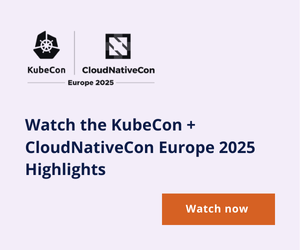-
How Ridgeline Enhanced (And Saved Money) on Their Cloud Security with CloudQuery
Ridgeline, a cloud-native investment management platform, improved infrastructure visibility, automated compliance, and cut cloud costs by over 30% using CloudQuery. By integrating it into their CI/CD pipeline, they scaled to 300+ AWS accounts, expanded resource coverage, and reduced manual overhead—ensuring secure, efficient, and compliant cloud operations.
-
Top Cybersecurity Framework Updates in 2025 and What to Expect in 2026
Major cybersecurity frameworks like NIST, ISO, & CIS saw critical updates in 2025. Here’s what changed & what’s expected in 2026 across AI, SBOM, and compliance.
-
Top product innovations driving cloud-native ecosystems in 2025
A brief summary of what happened at KubeCon Europe 2025 held in London in April 2025.
-
Volkswagen Car Hack Exposes Personal Data and Service Records
Flaws in Volkswagen’s connected car app exposed user data and service history.
-
Microsoft Unveils Next-Gen AI Tools and Open Standards at Build 2025
Microsoft Build 2025 announces new AI tools, models, and open standards, a future where AI agents drive innovation and simplify development.
-
SINGAPORE’S LARGEST BANK MOVES TO OPEN SOURCE WITH MARIADB
Discover how DBS Bank, Southeast Asia's largest bank, successfully migrated mission-critical applications from Oracle to MariaDB, achieving 30-70% cost savings, enhanced flexibility with microservices, real-time data streaming, and robust compliance for its demanding financial services operations.
-
MANTRA’s $108M Fund: Propelling Blockchain Innovation
MANTRA launches $108M fund to accelerate blockchain projects, focusing on real-world asset tokenization and DeFi. Global investors on board.
-
Deep Cogito Unveils Hybrid AI Models with Advanced Reasoning Capabilities
Deep Cogito releases Cogito 1, a family of hybrid AI models that combine reasoning and non-reasoning capabilities and outperform leading open models.
-
OpenText Titanium X: Redefining DevOps for the AI Era
Discover how OpenText’s Titanium X transforms DevOps with AI-powered automation, seamless integrations, and enhanced security for faster, smarter software delivery.
-
OpenAI Ventures into Cybersecurity: A Strategic Investment in Adaptive Security
OpenAI invests in Adaptive Security, its first cybersecurity investment. $43M to combat AI-powered threats with new defence strategies.
-
Can AI-powered Tools Help with Network Management
Explore how AI tools are revolutionizing network management with automation, optimization, and predictive insights
-
Ana is the World’s First Autonomous AI/ML Engineer
OpenAna launches Ana, an autonomous AI/ML engineer that designs, deploys, and evolves machine learning systems with minimal human input.
Filter & Sort



















